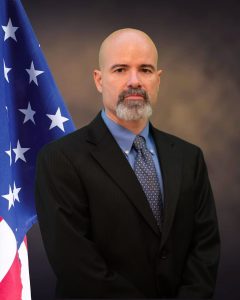Your Loved One is Missing, Now What? By Christian Nanry, Ph.D and Melanie Baker, DSW, MSW, MS
Your loved one goes missing, what do you do? NamUS, the National Missing and Unidentified Persons System, states 2300 missing persons are reported daily in the United States and approximately 600,000 go missing each year. Nearly 4400 unidentified human remains are recovered annually and while this is not a result anyone wants, it provides some closure. This means the chances of your case being resolved are extremely good. In the meantime, here are some helpful tips to follow (these are not exhaustive).
What are some immediate steps?
Appoint a point of contact.
Gather clear and unaltered pictures (one full body, and one good facial picture without filters).
Gather any social media and personal electronics information.
Write down your loved one’s daily routine.
o Have you noticed any new or changes of behavior?
o Has there been stretches of no communication?
o Have they ever threatened to leave before?
o Have they ever threatened to harm themselves?
Write down missing or required medications.
Write down extenuating circumstances that may have occurred (this might help elevate your case with the police).
Where are they running to or from?
Keep a notepad.
Build a timeline of events (helpful when getting facts in order).
How to prepare for the emotional rollercoaster?
· Faith, trust, family, and friendships will be tested in this process.
· Who is your closest friend who can help you? Is there a pastor you can contact?
· Do you work? Let your employer know what’s going on.
· Take care of yourself (shower, sleep, eat, exercise—routine things for you).
How to perform a “wellness check” at my loved one’s home?
· Ask a neighbor or the police to conduct a home check.
· If there are signs of forced entry or violence- Do NOT touch anything and call the police immediately.
· If you enter the home:
o DO NOT touch anything.
o Do NOT move items.
o Do NOT touch the interior side of any doors – the police might be able to get fingerprints from these areas.
o Use your notebook to write down what you see and everything you touch.
If able, take photographs but do not move anything
· Look for anything that might confirm location or intentions for being gone.
· Call their cell phone, office, home, etc., to see if they do answer or to obtain any updated messages. Leave messages on the phone, send texts to the phone.
· Call their employer to ask when the last time they were seen, who they spoke to, and what was happening at work out of the normal routine.
· Use the 5 W’s …
o When were they last seen?
o Who was the last person to see them?
o Where were they at the last point of communication?
o Why did they leave?
o What were they wearing? What was the conversation about? What time was it?
· Call local hospitals and ask if anyone fitting their description has been admitted.
When to contact the police?
The number one misconception is there is a 24-hour wait period before you can report a person missing. The actual truth is you can and should report them immediately! Provide your loved one’s name, date of birth, height, weight, and any identifiers such as tattoos, piercings, scars, eyeglasses, braces, medications, etc. Your loved one may have been suicidal or has a mental condition. Hiding any facts can slow things down drastically! If an abduction is feared, INSIST ON FINGERPRINTING THE HOUSE and CAR.
YOU are your loved one’s ADVOCATE. Your loved one will be considered healthy unless there were signs of violence or foul play. The information you gather could help the police with an investigation. For missing adults, it can be difficult to pursue an investigation as it is not unusual for adults to relocate on their own. If you think a crime has occurred, providing critical information and evidence will aid in the police’s involvement.
Children normally don’t have the independence to disappear on their own and teenagers who habitually run away are often unsupported by information you can provide to increase the probability of finding them. Request that your child’s information be immediately entered into the National Crime Information Center (NCIC) Missing Person File. Call the National Center for Missing & Exploited Children (NCMEC) on their toll-free telephone number: 1-800-THE-LOST (1-800-843-5678) or you can use the Live Hotline to talk to NCMEC.
Search and Rescue help – Find a reputable nonprofit organization and ask for their help in searching for your loved one. Nonprofits are volunteer based so there is no charge to help! Ask your friends, your church, and the police for recommendations. Make sure to check references and the Better Business Bureau regarding whomever you do choose. These organizations are trained to organize and conduct canvassing or neighborhoods, large areas, and even wooded or water areas. And you can participate and do not have to organize them.
Searches provide:
· A sense of action over helplessness.
· A sense of hope over fear.
· Clues to finding the missing person(s).
· A way for others to be involved.
· Increased chances of finding your loved one.
Many Law Enforcement agencies do not have missing persons units and detectives have large caseloads. Providing timely and relative information will add law enforcement on cases which can become resource intensive. These are great reasons to involve a search and rescue organization to be a value add to the detective on the case. However, the system is not perfect. Don’t give up! Pray and hope for the best and prepare for the worst. ❦
Professional links:
NAMUS – The National Institute of Justice’s National Missing and Unidentified Persons System:
The National Institute of Justice’s National Missing and Unidentified Persons System (NamUs) is a national centralized repository and resource center for missing persons and unidentified decedent records. https://namus.gov/
National Center For Missing Kids and Exploited Children
1-800-THE-LOST (1-800-843-5678):
www.missingkids.com
 About the Authors
About the Authors
Dr. Mel is a retired Army Captain trained in intelligence and surveillance, logistics and supply, and mobilization operations. She currently lives in Alabama. She is a survivor of exploitation and trafficking. She holds multiple degrees due to her love of education with two master’s degrees in related helping fields of counseling and social work, one from the University of South Alabama and the other from the University of Southern California. She holds a doctorate in Social Work in Innovation, Leadership, and Management from the University of Southern California. She is a published author and an expert analyst for several non-profit organizations including Called2Rescue Ministries and The Shepherds, and FREE International. Dr. Mel speaks all over the state raising awareness and travels nationally participating in FREE International’s Big Search events as well.
Called2RescueMinistries and The Shepherds Rescue
855-733-5567
www.c2rministries.org
FREE International.
702-436-6105
www.freeinternational.org
 Contributor and Co-author: Christian A. Nanry is a veteran and serves his community as a law enforcement official. He is a Board Advisor for PWP, and his research topics include Human Trafficking and Exploitation, Sextortion, and crimes against children.
Contributor and Co-author: Christian A. Nanry is a veteran and serves his community as a law enforcement official. He is a Board Advisor for PWP, and his research topics include Human Trafficking and Exploitation, Sextortion, and crimes against children.
He holds a Doctorate of Philosophy from Texas State University.
